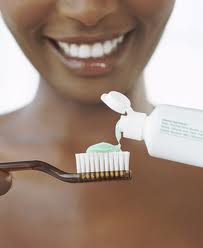 Common Dental Procedures
Common Dental Procedures
Brushing your teeth, flossing, gargling with mouthwash, and visits to the dentist all go into proper dental care. Unfortunately, even with the best intentions, your teeth may require some dental procedures. A Marietta dentist can perform a variety of surgical procedures on a patient’s teeth. Let’s take a look at a few common ones.
Root Canals
Chances are we’ve all had to deal with one or at least knew someone who needed a root canal. Root canals, in Kennesaw and other cities nationwide, are incredibly common. A root canal attempts to repair and save a tooth that is badly decayed or has become infected.
During the root canal procedure, the nerve and pulp, which reside in the tooth’s natural cavity, are completely removed. The nerve is actually not important to the tooth’s daily function. Its only purpose is to provide the sensation of hot or cold when you bite into food. Left untreated, infected dental pulp could spread to the bones around the tooth and cause pain and drainage problems.
While the procedure is notoriously known for being painful, root canals are about as painful as having a filling placed, and they are essentially always successful, though it does require a bit of recuperating. The best way to prevent a root canal procedure is using proper dental hygiene and avoiding any blunt trauma (from sports or otherwise).
Dental Bridges
A dental bridge is a method of replacing one or more missing teeth. They quite literally bridge the gap between teeth. In Marietta, dental bridges are quite common and effective.
There are three types of dental bridges.
- A traditional bridge is composed of two crowns and a pontic (false tooth) in between. The two crowns fit over the teeth surrounding the gap while the pontic acts as a snug replacement for the missing tooth.
- Cantilever bridges are used when there are teeth on only one side of gap.
- Maryland bridges, which are also known as resin-bonded bridges, consist of false teeth by a metal frame. The metal frame is then bonded to the teeth surrounding the gap. This type of bridge is more common with missing front teeth.
Bridges should be cared for like normal teeth. Remember that the success of the bridge depends upon the foundation of the surrounding teeth. Brushing twice a day and flossing should be standard to keeping your teeth and your new bridge clean.



I have heard of root canals as they are pretty common. I had heard the term dental bridges, though I didn’t know what they were until I read this article. Another procedure that I would like to know more about is called a frenectomy. I think it’s cool to see the different procedures that dental surgeons are capable of. It takes a lot of work to get the “perfect” smile that so many people desire.